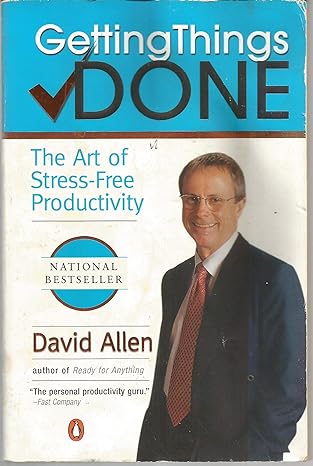“Getting Things Done: The Art of Stress-Free Productivity” by David Allen is a revolutionary book that transforms traditional thinking about productivity. The book presents a flexible system for organizing tasks and managing time effectively, ultimately leading to increased productivity and lower stress levels. Allen’s method, known as GTD, has gained widespread popularity for its practicality and effectiveness.
The Core Principles of GTD
David Allen’s GTD methodology is based on the principle of moving tasks out of the mind by recording them externally and breaking them into actionable work items. This allows the mind to focus on actually performing tasks instead of remembering them.
Key Concepts
- Capture Everything: Record every task or piece of information that requires attention.
- Clarify the Tasks: Determine the actionable items and what steps are needed to complete them.
- Organize Appropriately: Place tasks and information in categories based on when and where they can be completed.
The Five Steps of GTD
- Collect: Gather everything that needs attention.
- Process: Decide on the next actions for each item.
- Organize: Sort tasks by context, priority, and deadline.
- Review: Regularly update and review the list of tasks.
- Do: Focus on completing tasks, relying on the system for guidance.
Implementing GTD in Daily Life
Applying the GTD methodology in everyday life can significantly enhance productivity and reduce stress. This section covers the actionable steps to integrate GTD into one’s personal and professional life.
Setting Up the GTD System
- Create a Collection Tool: Use an app or physical notebook to capture every task or piece of information.
- Set Up a Processing Routine: Dedicate regular time to process and organize the tasks captured.
- Establish Contextual Lists: Sort tasks into lists based on context, such as ‘At Work’, ‘At Home’, or ‘Errands’.
Maintaining the GTD System
- Daily Review: Check and update lists every day to capture new tasks and remove completed ones.
- Weekly Review: Take time each week to update all lists, ensuring nothing is overlooked.
- Adapt and Evolve: Continuously refine the system to better suit changing needs and priorities.
Advanced GTD Techniques
For those who have mastered the basics, Allen provides advanced strategies to further enhance productivity.
Prioritization and Decision-Making
- Context-Based Choices: Choose tasks based on the current situation, energy levels, and available time.
- Outcome Focusing: Regularly envision the desired outcome to stay motivated and focused.
- Intuition-Guided Work: Trust your instincts on what to do next, informed by a well-maintained GTD system.
Overcoming Procrastination
- Breaking Down Projects: Divide larger tasks into small, manageable actions.
- Use of Calendar: Only use the calendar for time-specific actions and day-specific actions, not for all to-dos.
- Motivation Techniques: Remind yourself of the benefits and outcomes of completing tasks to stay motivated.
Conclusion
“Getting Things Done: The Art of Stress-Free Productivity” offers a comprehensive system that anyone can use to organize tasks, manage time, and increase efficiency. By capturing tasks externally, clarifying them into actionable items, and regularly reviewing them, individuals can focus more on doing tasks rather than remembering them. This system not only boosts productivity but also reduces the mental load and stress, leading to a more balanced and fulfilling life. David Allen’s GTD method stands as a testament to the power of organized thought and action in the modern world.

